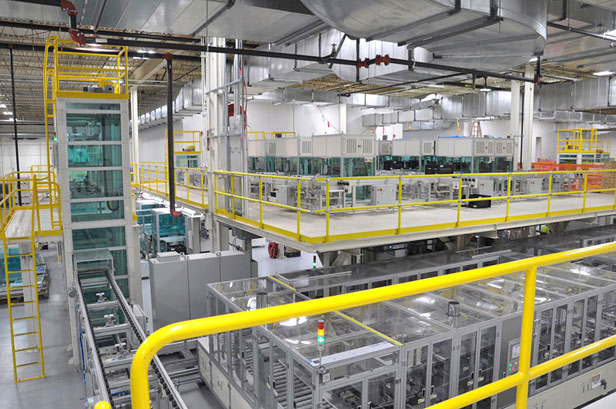A123’s China Deal Is the Latest Energy Controversy

To critics of U.S. government backing for alternative-energy companies, the deal just announced between A123 Systems and the Chinese conglomerate Wanxiang (see “A123 Systems Finds a Financial Lifeline in China”) is yet another sign of a failed policy. But to A123 and a number of other energy startups, Asian investors might be the only alternative to going out of business.
The cash-strapped battery maker, which last month said it had only enough money to last through October, reached an agreement with the auto parts division of Wanxiang that would give the Chinese company a controlling interest. The deal, which the companies hope to close by the end of the year, is structured to provide A123 Systems with much-needed cash for operations in the months ahead and then give Wanxiang the ability to buy warrants that would be converted into stock. If the Chinese and U.S. governments approve the deal, it would give Wanxiang about 80 percent ownership for a $450 million investment.
A123 Systems, which went public in 2009, had raised some $200 million in venture capital. In addition, it was awarded $249 million in a 2009 federal grant to build a lithium-ion battery factory in Livonia, Michigan, and a battery assembly plant nearby in Romulus. Already, the Wanxiang deal is causing pangs of worry that America’s technological crown jewels are being bought for bargain-basement prices. Representative Cliff Stearns of Florida, a vocal Republican critic of the Obama administration’s policies to support clean-energy companies, said in a statement that the transfer of taxpayer-funded intellectual property to a foreign country “raises serious national security issues.”
A123 Systems says the deal is in the best interest of its shareholders, its employees, and its technology. Being majority-owned by a large Chinese conglomerate gives it better access to the Chinese market for electric vehicles (see “What Happened to A123?”). Money from the Department of Energy, half of which has been spent so far, can still be invested only in U.S.-based assets. “We’re confident in Wanxiang’s commitment to the U.S. We think they will continue to grow our operations here,” says A123 Systems’ marketing manager, Dan Borgasano. “We think it’s a positive outcome.”
Asian investors have been active in scouting out fledgling clean-technology companies for some time, and there are signs that the trend could accelerate. Lithium-ion battery maker Boston Power shifted its base to China last year and announced recently that it has signed on a Chinese automaker to purchase its electric-vehicle battery packs (see “Boston Power Battery Finds EV Customer in China”). Over the past few years, Asian conglomerates have taken stakes in a number of small companies in energy-related industries, including solar power, smart-grid technology, and fossil fuels.
For the startups themselves, partnering with a large company offers a large potential customer and funding to further develop their technology. In many cases, corporate money from multinationals is helping fill the void left by venture capitalists who are moving out of energy, a capital-intensive and slow-moving field not well suited to the venture model.
There’s increasing demand for energy products in Asia, where fast-growing countries are investing far more in energy-related infrastructure than is the case in the United States. China, in particular, has moved swiftly to advance alternative energy in various ways.
For companies that need growth capital and want access to fast-growing markets, then, the path to profitability may continue to pass through Asia. Or if companies stumble as badly as A123 Systems has, they could become attractive acquisition targets for companies there.
Keep Reading
Most Popular
Large language models can do jaw-dropping things. But nobody knows exactly why.
And that's a problem. Figuring it out is one of the biggest scientific puzzles of our time and a crucial step towards controlling more powerful future models.
How scientists traced a mysterious covid case back to six toilets
When wastewater surveillance turns into a hunt for a single infected individual, the ethics get tricky.
The problem with plug-in hybrids? Their drivers.
Plug-in hybrids are often sold as a transition to EVs, but new data from Europe shows we’re still underestimating the emissions they produce.
Stay connected
Get the latest updates from
MIT Technology Review
Discover special offers, top stories, upcoming events, and more.